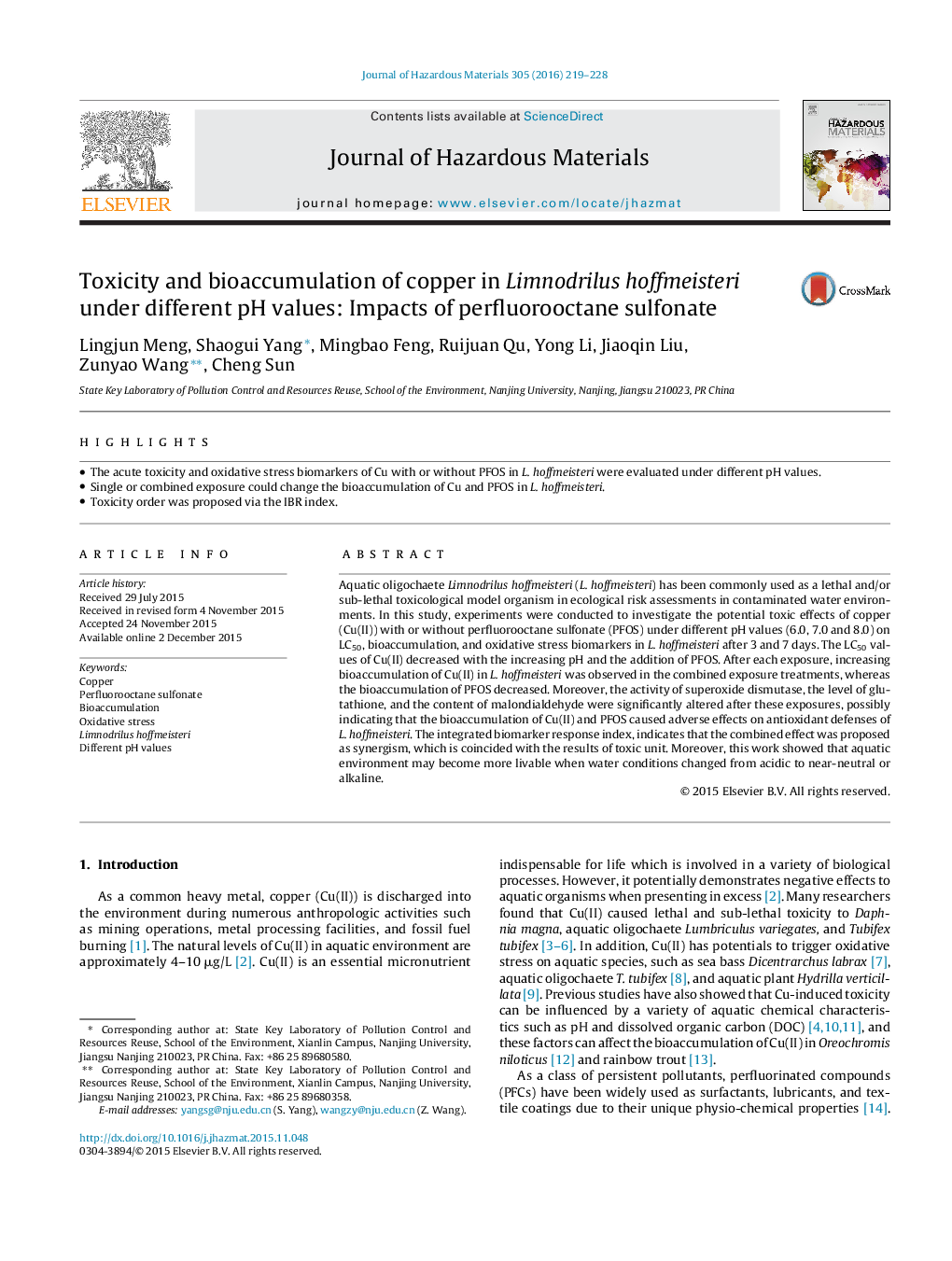| Article ID | Journal | Published Year | Pages | File Type |
|---|---|---|---|---|
| 575539 | Journal of Hazardous Materials | 2016 | 10 Pages |
Abstract
Aquatic oligochaete Limnodrilus hoffmeisteri (L. hoffmeisteri) has been commonly used as a lethal and/or sub-lethal toxicological model organism in ecological risk assessments in contaminated water environments. In this study, experiments were conducted to investigate the potential toxic effects of copper (Cu(II)) with or without perfluorooctane sulfonate (PFOS) under different pH values (6.0, 7.0 and 8.0) on LC50, bioaccumulation, and oxidative stress biomarkers in L. hoffmeisteri after 3 and 7 days. The LC50 values of Cu(II) decreased with the increasing pH and the addition of PFOS. After each exposure, increasing bioaccumulation of Cu(II) in L. hoffmeisteri was observed in the combined exposure treatments, whereas the bioaccumulation of PFOS decreased. Moreover, the activity of superoxide dismutase, the level of glutathione, and the content of malondialdehyde were significantly altered after these exposures, possibly indicating that the bioaccumulation of Cu(II) and PFOS caused adverse effects on antioxidant defenses of L. hoffmeisteri. The integrated biomarker response index, indicates that the combined effect was proposed as synergism, which is coincided with the results of toxic unit. Moreover, this work showed that aquatic environment may become more livable when water conditions changed from acidic to near-neutral or alkaline.
Related Topics
Physical Sciences and Engineering
Chemical Engineering
Chemical Health and Safety
Authors
Lingjun Meng, Shaogui Yang, Mingbao Feng, Ruijuan Qu, Yong Li, Jiaoqin Liu, Zunyao Wang, Cheng Sun,
